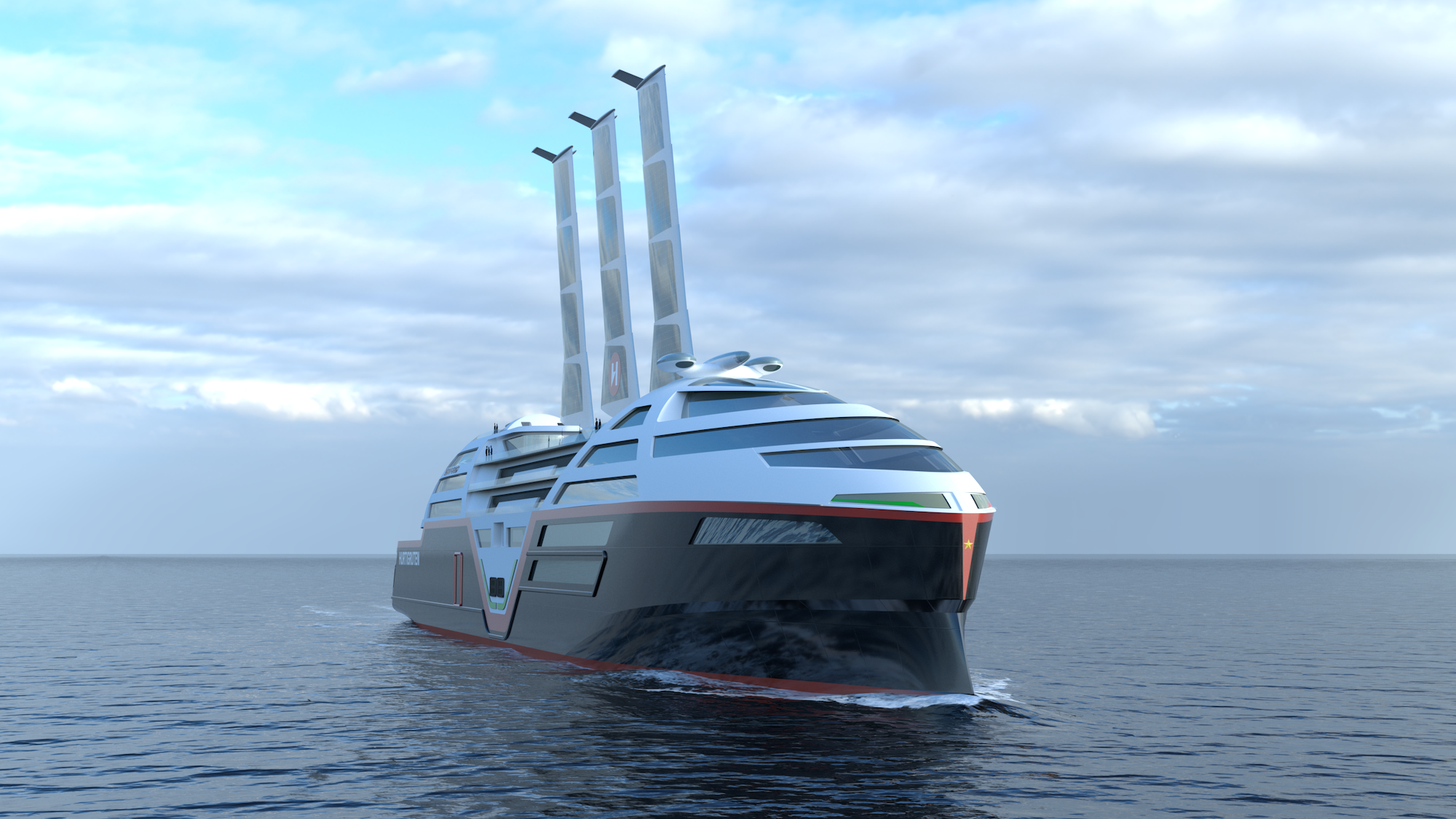

Today’s cruise ships are environmental nightmares. Just one vessel packed with a veritable petri dish of passengers can burn as much as 250 tons of fuel per day, or about the same emissions as 12,000 cars. If the industry is to survive, it will need to adapt quickly in order to adequately address the myriad ecological emergencies facing the planet—and one Norwegian cruise liner company is attempting to meet those challenges head-on.
Earlier today, Hurtigruten Norway unveiled the first designs for a zero-emission cruise ship scheduled to debut by the end of the decade. First announced in March 2022 as “Sea Zero,” Hurtigruten (Norwegian for “the Fast Route”) showed off its initial concept art for the craft on Wednesday. The vessel features three autonomous, retractable, 50m-high sail wing rigs housing roughly 1,500-square-meters of solar panels. Alongside the sails, the ship will be powered by multiple 60-megawatt batteries that recharge while in port, as well as wind technology. Other futuristic additions to the vessel will include AI maneuvering capabilities, retractable thrusters, contra-rotating propellers, advanced hull coatings, and proactive hull cleaning tech.
[Related: Care about the planet? Skip the cruise, for now.]
“Following a rigorous feasibility study, we have pinpointed the most promising technologies for our groundbreaking future cruise ships,” said Hurtigruten Norway CEO Hedda Felin. Henrik Burvang, Research and Innovation Manager at VARD, the company behind the ship concept designs, added the forthcoming boat’s streamlined shape, alongside its hull and propulsion advances, will reduce energy demand. Meanwhile, VARD is “developing new design tools and exploring new technologies for energy efficiency,” said Burvang.
With enhanced AI capabilities, the cruise ships’ crew bridge is expected to significantly shrink in size to resemble airplane cockpits, but Hurtigruten’s futuristic, eco-conscious designs don’t rest solely on its next-gen ship and crew. The 135-meter-long concept ship’s estimated 500 guests will have access to a mobile app capable of operating their cabins’ ventilation systems, as well as track their own water and energy consumption while aboard the vessel.

Next up for Hurtigruten’s Sea Zero project is a two-year testing and development phase for the proposed tech behind the upcoming cruise ship, particularly focusing on battery production, propulsion, hull design, and sustainable practices. Meanwhile, the company will also look into onboard hotel operational improvements, which Hurtigruten states can consume as much as half a ship’s overall energy reserves.
Hurtigruten also understands if 2030 feels like a long time to wait until a zero-emission ship. In the meantime, the company has already upgraded two of its seven vessels to run on a battery-hybrid-power system, with a third on track to be retrofitted this fall. Its additional vessels are being outfitted with an array of tech to CO2 emissions by 20-percent, and nitrogen oxides by as much as 80 percent.
